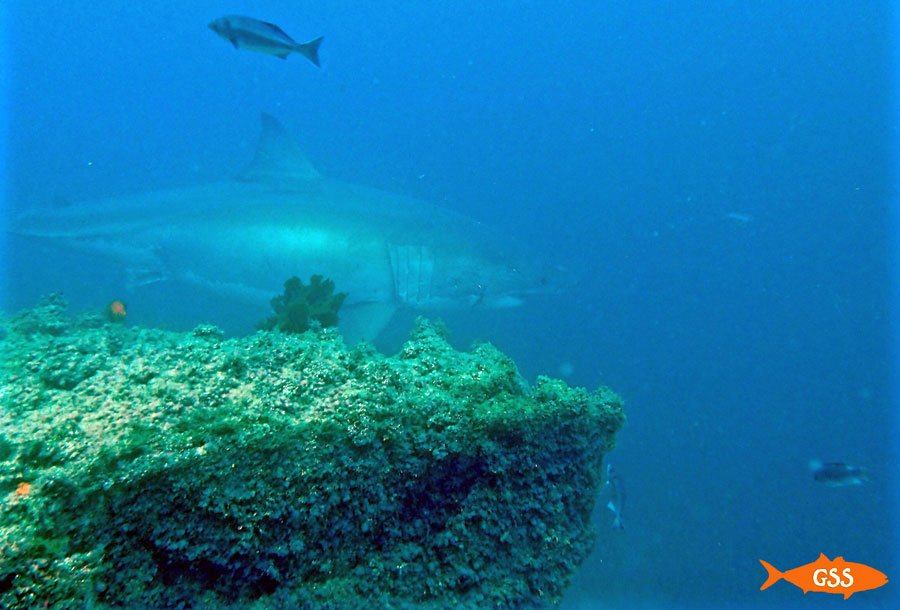It is not often that I soil my wetsuit.
Most of our scientific diving here at Santa Catalina Island involves counting fish, kelp stipes, and invertebrates along a 20-foot depth gradient. Much of this work is somewhat bland and rarely exceeds a high level of excitement. Say, that of observing a large carnivore.
On August 6th 2015, at a Two-Harbors area dive site known as Blue Caverns, my research team and I descended on what we like to call a “fun dive”. That is, there is no data gathered, we just swim, wave our hands at each other, blow bubble rings, and take pictures of things. As we cruised along the infamous Blue Caverns wall, known by its large trellises, awnings, and staggering height, we approached what looked like an excellent perch for a photo, which would presumably replace my current Facebook profile picture.
Approaching this corner, a shape began to emerge from around it. I raised my camera to capture what I anticipated was a Giant Black Sea Bass. What I ended up observing was a 15-18 foot female Great White Shark.
Hearts stopped. Regulators halted bubbling.
No kicks were administered as our team of three hovered at 50 feet over nearly double that in depth. As she gracefully cruised by us, resembling a grey mini-cooper with a 7 foot tail, I snapped one picture after another thinking firstly: you are a very small fish in a very large pond right now, secondly: that is not a blue-banded goby, thirdly: keep taking pictures, nobody is going to believe this. The entire period of her pass lasted about 6-8 seconds, and as she disappeared into dark blue water my dive team and I made the most dilated eye contact known to man. We then laughed hysterically, but only because we were too shocked to cry. It then occurred to us that it would be best to return to our boat two football fields away. We trimmed the wall back to the boat with much head swiveling, surfaced, jumped back in the boat, and rejoiced as we still had our limbs, lives, and pictures to prove it!
[poll id=”10″]
After discussing this encounter with Dr. Chris Lowe of the Shark Lab at CSU Long Beach, it appears that this individual was likely a pregnant female. This is 1 of 4 adult encounters in the last 8 years at Blue Caverns.
We as divers are graced with the opportunity to see and experience things many only experience virtually. Even then, there are many ocean creatures so rare that only a handful of immersed folk ever see them. There is no doubt a strong emotional perturbance in seeing something this infamous and powerful. In addition to an enhanced feeling of humility, my dive team and I got more than we bargained for. Soiled wetsuits.
Words and photos by Griffin Srednick
Griffin Srednick is a Masters Student in Biology in Dr. Mark Steele’s Fish Ecology Lab at CSU Northridge. When he isn’t surfing, rock climbing, or free-diving, he studies the effect of invasive algae and algal structure on nearshore fish communities.


![whitey_3[1]](https://californiadiver.com/wp-content/uploads/2015/08/whitey_31.jpg)